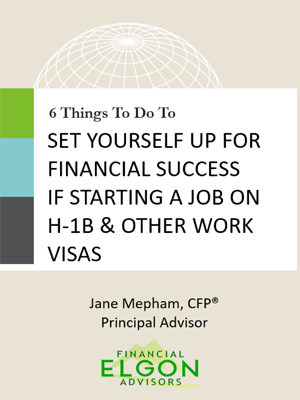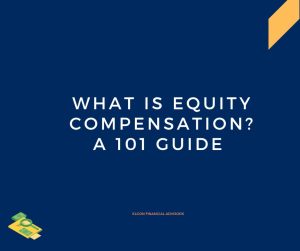Updated 6/29/2025
One of the most effective ways I have found to teach kids about money is what my dad called the cost-sharing method, which he used with us when we were growing up.
Photo by Jay Castor on Unsplash
Financial Literacy Month – April
April is the National Financial Literacy Month in the US. The goal is to raise awareness of the importance of financial literacy.
The Jump$start coalition started promoting April, in 2000 as the Financial Literacy Youth Month.
In 2004 the Senate gave the program a big push by passing a resolution that made April the National Financial Literacy Month. This meant that the government recognized how critical having financial skills are.
Many studies show that people need guidance in handling financial matters and making smart money choices.
They need help balancing their financial decisions, such as saving, investing, and spending.
Millennials Lack Basic Financial Literacy
A majority of Millennials, or those around age 27 to 41 (depending on the data source), are very unsatisfied with their current financial situation.
34% are unhappy, but they may not have the tools to change the situation. Of those that have an annual household income above $75,000, 34% are concerned they may not be able to repay their student loans.
Another statistic from the same study shows that this group has the lowest level of financial literacy of all demographics. Only 24% demonstrate a basic understanding of financial knowledge.
These are some of the prime earning years. It’s crucial for those looking to become financially independent.
According to this Bloomberg article, millennials are the most educated generation in history, but with various distributions across social-economic groups.
Were basic financial skills not taught, or were the students absent that day?
Until schools do more to educate their students about money, parents must step up and teach their children about finances when they are still young. Make money a part of everyday conversation.
If you are a parent or guardian, be creative, make it fun, and use every teachable moment that comes your way.
Two posts provide detailed instructions on how to do this today.
How to open a Roth IRA account for your teenager in 6 steps
More than anything else, make it count for something. It gets the kids 100% vested in the idea, allowing them to become more curious about money as they grow.
Teach Kids About Money – The Cost-Sharing Plan
Looking back, I’m very lucky to have grown up in a family where money was a part of everyday conversation. My parents’ philosophy was and still is
“If you can’t manage one dollar, you can’t manage a million”.
The amount of money you have doesn’t matter if you don’t know how to budget it. How you use what you have is what counts.
My father came up with an idea he called “The Cost Sharing Plan,” which forced us kids to be completely immersed in the concept of money.
It forced us to learn about where the money comes from, to differentiate needs and wants, and the importance of working hard.
This is how the plan worked.
Cost-Sharing Plan In Action
My parents would take care of all the necessities, including food, shelter, clothing, school tuition, etc. They ensured that we were comfortable, without being extravagant.
You have to decide as a family what makes sense for your specific situation.
With the basics out of the way, we could now pick what I’ll call “other projects,” which required money but were not considered needs.
We had a lot of leeway here, and we all managed to accomplish a great deal.
We had to know exactly when we required the money, how much we needed, and finally, we had to come up with half of the money or a significant percentage of it before the due date.
It also meant having to do chores to earn money, and as we grew older, being entrepreneurial enough to go out and earn some money.
Some people might argue that making kids ‘fed for themselves’ is not ideal, and that’s okay.
You have to decide if it works for your family or not, but keep the end goal in mind. I think it was brilliant!
I have used the same method with my kids, and based on their feedback, it’s working. Based on this guest post by my oldest, who shares the money lessons they learned from us as kids.
Afraid To Talk To Your Kids About Money? My Mom Is Not.
Back to the Cost-Sharing Plan: Some of the things I recall doing under this plan included:-
Paying for certification to become a lawn tennis instructor,
Taking extra school/church trips,
Having extra pocket money for school outings, among other things.
It’s probably one of the best ways I have found to combat the entitled mentality we see today.
Teach Kids About Money – Financial Lessons Learned
By adopting this method, he got us started on the basics of finances and sparked the desire to learn more about how money works.
We learned to have a healthy relationship with money. Looking back, we gained the following from that experience.
We learned how to plan from an early age.
We learned how to distinguish between needs and wants.
We learned how to budget and prioritize our money.
We learned the value of hard work and the reward of earning money.
More than anything else, we learned to be patient when it came to money and learned to wait for the things we wanted. We learned to avoid going into debt.
We never took anything for granted that cost money.
Looking back, I credit these early money lessons with my strong desire today to want to help others with their finances.
How are you teaching kids about money today?
Need Help Figuring Out The US Finance Landscape?
Free Financial Assessment
If not ready to start, that’s okay, but please stay up to date with our regular updates by email or by joining here. Sign Up Here.

6 Things to Do
When Starting A Job on H-1B Visa
You are starting a new job on a work visa, there are some critical things, that will set up for financial success in the first 3-6 months. Download the free guide below for the detailed list!
We never spam. By signing up you’ll also receive access to future resources right to your inbox.
Disclaimer: This article is provided for general information and illustration purposes only. Nothing contained in the material constitutes tax advice, a recommendation for the purchase or sale of any security, investment advisory services, or legal advice. I encourage you to consult a financial planner, accountant, and/or legal counsel for advice specific to your situation. Reproduction of this material is prohibited without written permission from Jane Mepham and all rights are reserved. Read the full disclaimer here.

Recent Articles

What Is Equity Compensation? A 101 Guide For Immigrants
What is equity compensation? This is a 101 guide for immigrants and foreign nationals on work visas with equity compensation. I address NSO’s, ISO’s, RSU’s ESPPs and Performance Stock Units.
In this intro guide – we discuss the characteristics of each, the tax treatment of each type and what to watch out for with each type.

Where Is The Best Place To Invest Short-term Money Now?
Your short-term money (0 -3 years) is very different from your long term money (10-15 years +).
The priority is to keep that money liquid, and easily accessible. Next you want that money to keep up with inflation. Now if you can can get some interest of top of that, that will be awesome.
In this post we describe all the place you can invest your short-term money and how to think about your emergency fund.

How To Prepare For A Layoff On A Work Visa
Good financial planning will ensure you are well-prepared for when bad things happen.
If you are on a work visa, and you get laid off – you have 60 days to find another job or leave the country.
In this post, I provide a list of things you can do ahead of time to avoid having to scramble last minute if laid off.




